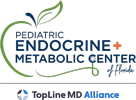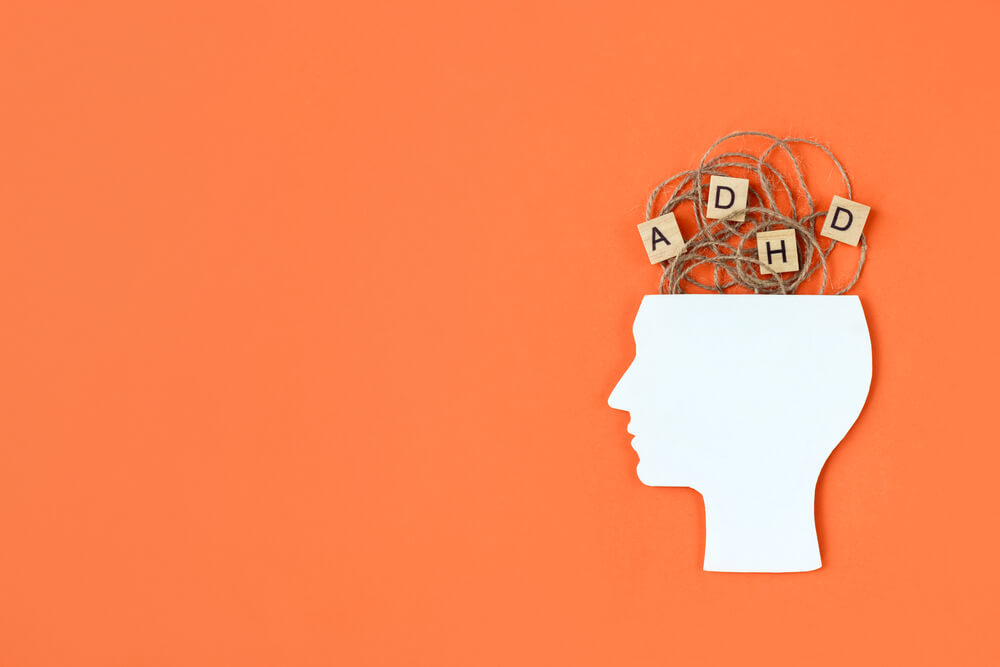October is more than just a month of falling leaves and pumpkin spice; it’s also a time dedicated to raising awareness and understanding about Attention Deficit Hyperactivity Disorder (ADHD). As we embark on National ADHD Awareness Month, it’s crucial to shed light on this neurodevelopmental disorder that affects both children and adults. In this comprehensive blog post, the team at PEMC of Florida will explore the adhd ribbon color, delve into the significance of National ADHD Awareness Month, discuss the signs of ADHD in kids, and explore the factors contributing to the development of attention deficit hyperactivity disorder.
And if you want to learn more about treatments for genetic disorders, schedule an appointment with us after reading this article.
The ADHD Ribbon Color

Before we dive into the depths of ADHD awareness, let’s begin with a symbol that encapsulates the spirit of the cause—the ADHD ribbon color. The vibrant orange ribbon represents hope, support, and solidarity for individuals and families affected by ADHD. This symbol serves as a reminder that understanding and compassion are essential in addressing the challenges associated with attention deficit hyperactivity disorder. Embracing the orange ribbon not only signifies a commitment to awareness but also signifies a collective pledge to foster empathy and build a community that stands united against the stigma surrounding ADHD. It’s a visual representation of the support network needed to navigate the complexities of this neurodevelopmental disorder.
National ADHD Awareness Month
October has been designated as National ADHD Awareness Month to draw attention to the prevalence and impact of ADHD on individuals and communities. During this month, various events, campaigns, and educational initiatives take place to foster a better understanding of ADHD. It’s a time to dispel myths, promote empathy, and encourage open conversations about ADHD. By acknowledging National ADHD Awareness Month, we contribute to breaking down stigmas and creating a more inclusive and supportive environment for those affected by the disorder.
ADHD By The Numbers
The landscape of Attention Deficit Hyperactivity Disorder (ADHD) is multifaceted, with statistics revealing a complex web of challenges and disparities. Around six in 10 U.S. children grappling with ADHD also contend with at least one additional mental, emotional, or behavioral condition, underscoring the intricate nature of neurodevelopmental disorders, including anxiety or depression.
Notably, ADHD diagnoses exhibit disparities across ethnicities, with Black, non-Hispanic children experiencing a higher prevalence at 12%, compared to their white (10%), Hispanic (8%), and non-Hispanic (3%) counterparts.
While a significant majority, approximately 77%, of U.S. children diagnosed with ADHD receive treatment, a concerning 23% do not, signaling potential gaps in access to care. Among those receiving treatment, 32% undergo a combination of medication and behavioral treatment, 30% rely solely on medication, and 15% exclusively engage in behavioral treatment.
State-level variations are stark, with Mississippi reporting the highest prevalence of current ADHD diagnoses at 14.4%, in contrast to California’s lowest prevalence at 5.3%.
These statistics underscore the need for targeted interventions and equitable access to resources. The enduring impact of ADHD is evident as 35% to 78% of diagnosed children continue to grapple with symptoms into adulthood, influencing not only personal well-being but also economic prospects.
Signs of ADHD in Kids
Recognizing the signs of ADHD in children is not just a matter of routine observation; it is a critical step towards early intervention and providing the necessary support for the child’s developmental journey. Childhood is inherently full of energy and occasional impulsivity, but when patterns of inattention, hyperactivity, and impulsivity persist, it becomes crucial to delve deeper into the possibility of ADHD. The common signs that parents, teachers, and caregivers should be attuned to include difficulty staying focused on tasks, a heightened level of impulsivity leading to impromptu actions without forethought, noticeable hyperactivity, forgetfulness in routine activities or tasks, and frequent interruptions during conversations or activities. These signs collectively paint a picture of the challenges a child with ADHD may be facing in various aspects of their life, from academic endeavors to social interactions. It is important to approach the identification of ADHD with an understanding that the manifestation of these symptoms can be highly individualized, creating a spectrum of presentations. This nuanced perspective emphasizes the need for a keen awareness of the unique behavioral patterns of each child. Early identification allows for timely intervention, which, in turn, can significantly improve the child’s quality of life and pave the way for tailored strategies to address specific challenges they may encounter as a result of ADHD.
Understanding What Causes ADHD
The exact cause of ADHD remains a complex puzzle with multiple contributing factors. While genetics play a significant role, environmental factors also influence the development of ADHD. Factors such as premature birth, low birth weight, exposure to toxins during pregnancy, and neurological injuries can contribute to the risk of developing attention deficit hyperactivity disorder. Moreover, studies suggest that certain differences in brain structure and function may contribute to ADHD symptoms. It’s essential to approach ADHD with a holistic perspective, understanding that a combination of genetic and environmental factors contributes to its manifestation.
Attention Deficit Hyperactivity Disorder: Navigating Challenges and Celebrating Strengths

Living with ADHD undoubtedly poses unique challenges, but it is paramount to shift the narrative and acknowledge the inherent strengths and talents that individuals with ADHD frequently exhibit. While attention deficit hyperactivity disorder may present hurdles in conventional settings, it also often comes hand-in-hand with a reservoir of creativity, resilience, and a distinctive approach to problem-solving. The boundless energy and spontaneous thinking that characterize ADHD individuals can lead to innovative ideas and unique perspectives that might not emerge in more structured environments. The creative potential within individuals with ADHD is a dynamic force that, when harnessed, can contribute significantly to various fields, from the arts to entrepreneurship.
Moreover, the resilience of individuals with ADHD should not be underestimated. The daily navigation of a world that may not always cater to their specific needs fosters remarkable adaptability and tenacity. This resilience can become a guiding force, propelling individuals with ADHD to overcome obstacles, learn from experiences, and develop coping mechanisms that contribute to personal growth.
In the realm of problem-solving, the ADHD mind often thrives on dynamic thinking and adaptability. Unconventional approaches and the ability to see connections where others may not can lead to innovative solutions to complex problems. By recognizing and nurturing these problem-solving skills, we create an environment that not only accommodates but also values the unique contributions of individuals with ADHD.
Fostering a supportive environment that embraces these strengths is pivotal. By doing so, we empower individuals with ADHD to flourish in various aspects of their lives. This empowerment extends beyond academic and professional spheres, influencing personal relationships, self-esteem, and overall well-being. It emphasizes the importance of understanding and appreciating neurodiversity, recognizing that diverse perspectives and skills contribute to a richer, more vibrant tapestry in our communities. In this way, acknowledging and harnessing the strengths associated with ADHD becomes a catalyst for creating a more inclusive and supportive society.
Conclusion
As we immerse ourselves in National ADHD Awareness Month this October, let’s reflect on the significance of the ADHD ribbon color, understand the signs of ADHD in kids, and explore the complex factors contributing to the development of attention deficit hyperactivity disorder. By spreading awareness and education, we contribute to a more compassionate and informed society, paving the way for better support and understanding for those navigating the challenges and celebrating the strengths associated with ADHD.


